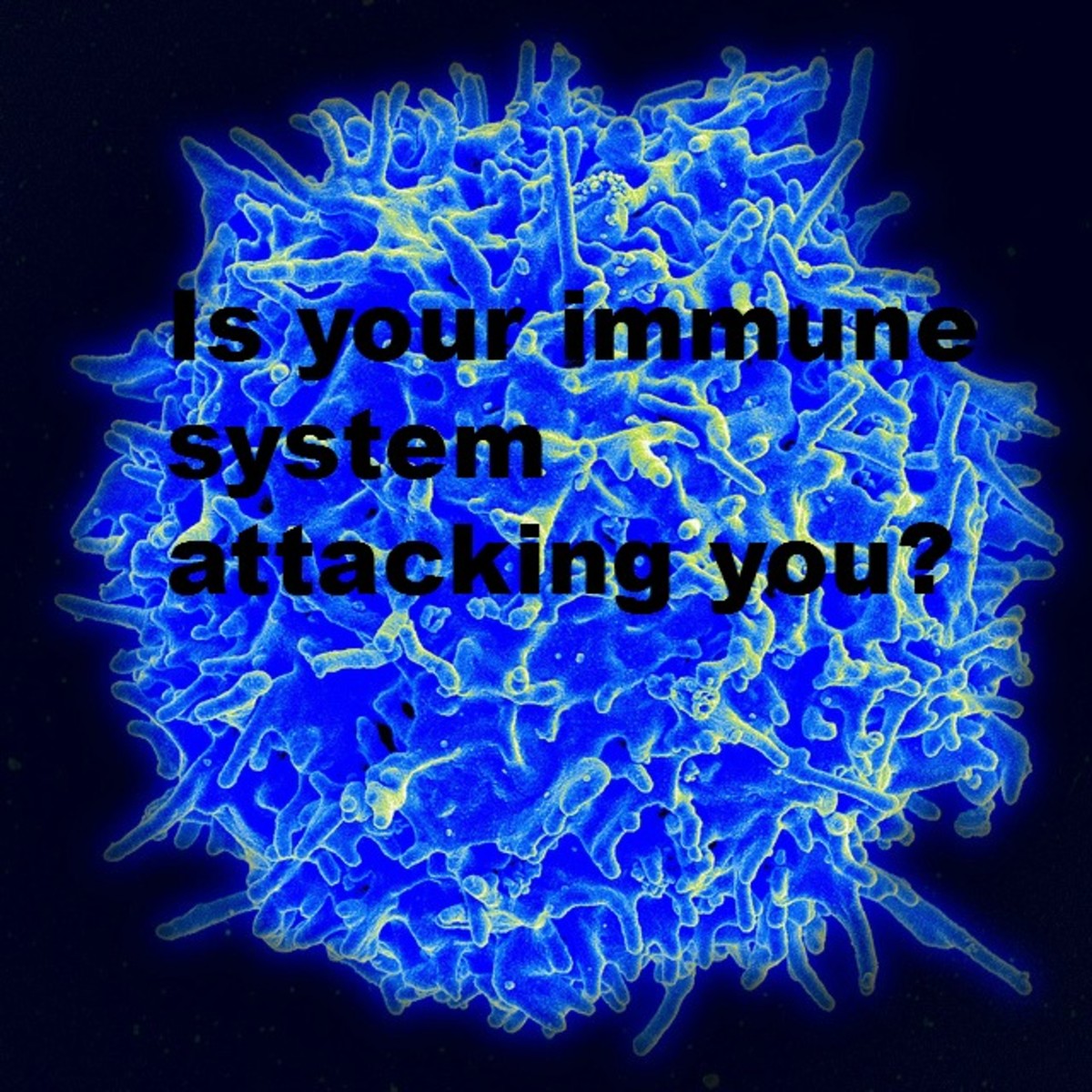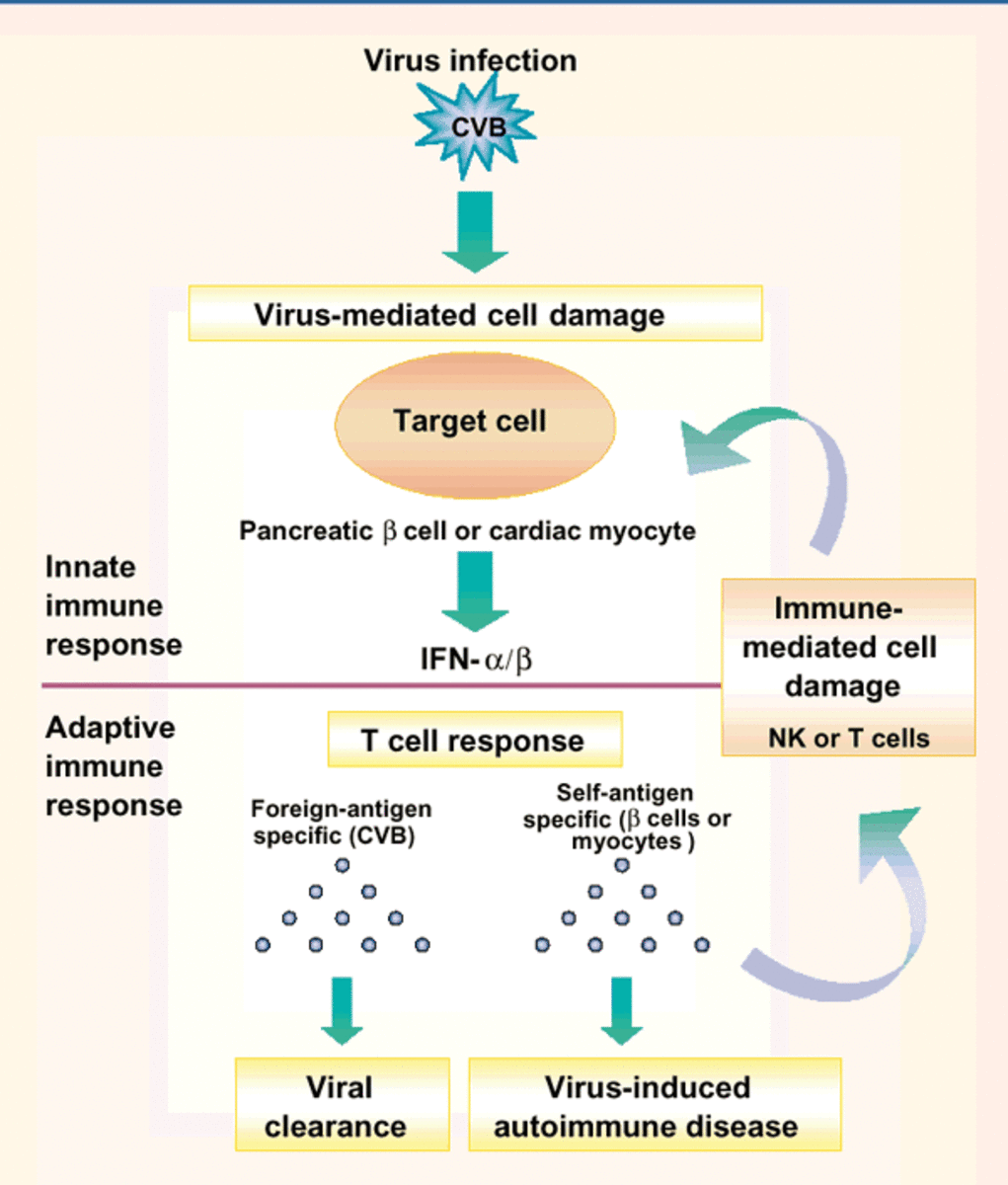Septic Shock, Bacteremia or Blood Infection
Blood Poisoning
Sepsis awareness poll 2011
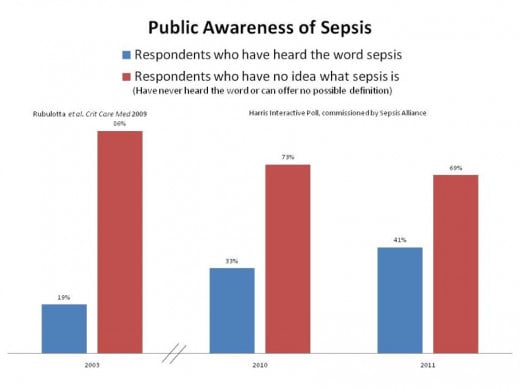
World Sepsis Day launched to reduce deaths from disease that kills millions

Death from sepsis after contracting overwhelming jaw cyst.
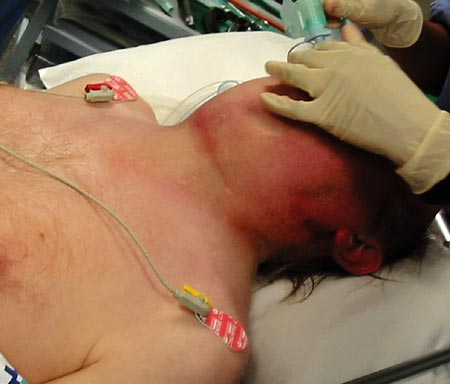
Infant Death from Septic Shock
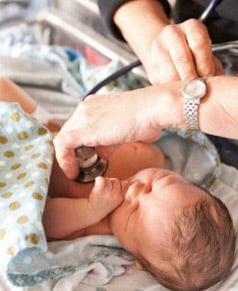
The deadly speed of Sepsis Shock.
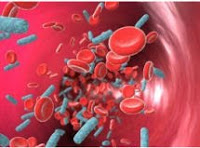
Public Awareness
Over 200,000 Americans, and a million more world over, die each year from Sepsis. Yet, according to the poll above, 69% of participants haven't even heard the word Sepsis, let alone know what it is.
Since the number of cases have been on the rise each year, we should get familiar with this swift and silent killer!
Blood Infection, Septicaemia, Septic Shock and Blood Poisoning are the other names sepsis is known by.
- Sepsis, (in Greek, it means putrefy or decay), is an overwhelming immune response to infection in the body.This is triggered by the invasion of microbes in the blood, lungs, urinary tract, skin or other tissues. Mostly by bacteria, but it can be parasites, fungi or viruses and other toxic pathogens.
- Septicaemia, is the medical term used to refer to the presence of any infectious disease causing organisms in the bloodstream, this leads to Sepsis.
- Bacteremia, is the presence of bacteria in the blood.
- Sepsis is defined as Systemic Inflammatory Response Syndrome (SIRS). This is an attempt by the blood circulatory system (throughout the whole body) to remove harmful stimuli.
One can get infected through a variety of entry points, from a simple scrape to a serious medical problem. Some of the serious medical problems from where sepsis can occur are :-
- Pneumonia, this is an inflammation of the lungs that is caused by a bacteria or a virus infection.
- The Bloodstream, parasites invade the body through improperly cooked meat or a bite from mosquitoes or other bugs or inhaled when playing in dirt where there was animal feces.
- Urinary Tract Infection, when germs attack the system that makes urine and carries it out of your body.
- Meningitis, this is an inflammation of the covering around the brain and spinal cord caused by viruses or bacteria.
- Appendicitis, this is caused when the appendix gets blocked by stool, cancer or any foreign body, resulting in inflammation.
Bacteremia
Who gets it and Where does Sepsis occur?
Sepsis does not start on it's own, it stems from other medical conditions and it can begin in different parts of the body where there is an infection or a localized infection, (my personal experience). Once you're infected and the immune system responds, this in turn causes blood clots and leaky blood vessels. Impaired blood flow causes damage to the organs, this would quickly lead to multiple organ failure and, depending on how quickly the person got medical attention, might be the cause of death or loss of a body part.
Anyone can get sepsis, especially people with a weakened immune system.
- Newborn babies. This is called neonatal sepsis, early onset passed from the mother through the placenta or birth canal during birth and is found in babies 2 - 3 days after birth.
- The elderly. Sepsis in elderly people can cause long term problems, physically or mentally, they can be left with memory problems. Delirium is common in severe cases of sepsis.
- People with chronic illnesses such as Diabetes, AIDS, Cancer, etc.
- Post surgery patients. Localized infection i.e when infected tissue stays in one area of the body.
Common places where an infection could turn into sepsis would be:-
- The bones. When bacteria invades the bone, it is called osteomyelitis.
- The liver. Infections such as hepatitis, cirrohsis, liver abscess, etc.
- The kidney. Pyelonephiritis is the name for kidney infections.
- The skin. We can get infected skin from the staphylococcus bacteria, skin lice, shingles, athletes foot, yeast infections, etc.
And for patients in the hospital, places where you can get sepsis are:-
- Intravenous lines.
- Surgical sites.
- Surgical drains.
- Implanted medical devices.
- And bedsores.
- Other skin problem areas.
Common infections where sepsis can occur are :-
- MRSA, this is a staphyloccocus infection.
- Malaria, is a life threatening, parasitic disease spread by mosquitoes.
- Kidney stones form when there is dehydration in the body. As a result, not enough urine to wash out the microscopic crystals in the urine.
Sepsis can cause :-
- Blood clots that prevents oxygen and nutrients from to vital parts of the body.
- Low blood pressure that prevents the blood from reaching to vital parts of the body.
- Leakage from blood vessel lining.
What is Shock?
Symptoms and Diagnoses of Sepsis.
It is very important to know what the warning signs of Sepsis are and to be able to recognize them in order to prevent the body from going into Septic Shock. There are several types of symptoms:-
- General symptoms.
- Fever.
- Chills.
- Rapid heart rate, >90 bpm
- Rapid breathing.
- Confusion.
- Swelling.
- High glucose in non-diabetics.
- Decreased urination.
- Nausea and vomiting.
- Diarrhea.
Some of the above symptoms are similar to other conditions, that's why sepsis is hard to diagnose in it's early stages. But a presence of all of them would tell you that it is time to get to the hospital ER.
- A blood test will determine whether the :-
- White blood cell count is normal or not.
- White blood cells are immature.
- Levels of plasma C-reactive protein are high.
- PCT level is elevated.
- Levels of platelets in the blood.
- Levels of lactic acids in the blood.
- Levels of oxygen in the blood.
In addition to blood tests, an ultra sound, a CT scan and a chest X-ray will be done, the heart rate and blood pressure will be checked.
Patients with Sepsis is usually in intensive care unit (ICU). Doctors will start a treatment of :-
- Broad Spectrum antibiotics, to kill any bacteria.
- IV fluids to maintain blood pressure.
- Oxygen to maintain normal blood oxygen.
- Targeted drug use, once the culprit has been identified.
- If needed, surgery to drain and clean the infection.
Sepsis-causing bacteria
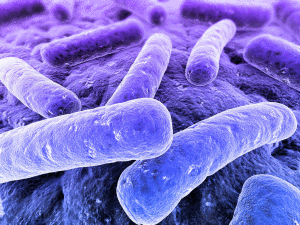
How I learned about Sepsis.
In the year 2001, I underwent a Laparoscopic Splenectomy to get my spleen removed because of ITP. Once my doctor deemed it to be safe, I went home to recuperate and my incision was healing nicely.
A few days after I went home, I started feeling hot or cold alternately, my incision site pained, it pains for a few seconds then it goes away. I knew that something went wrong there, I visited the ER at the hospital and they couldn't find what was wrong, a CT scan couldn't detect any infection.
The following day, the after care nurse came to attend to my incision and she was concerned by what she found so she had called it in to the hospital. Something weird happened later that day, we had Chinese food for supper, and I found that when I coughed, my incision dressing becomes wet and needed changing so I went to change it, and I wasn't sure, but the gauze smelled like Chinese food.
I had to cough again, so I placed tissues over the opening, when I removed it, I saw bits of broccoli on it where the fluid had squirted.
My neighbour was a nurse, so I went across and asked her about it and she said that with a situation like that, I should go to the hospital ER right away. I wasn't too keen on going to the hospital ER for a consecutive day, so my husband and I went to see his doctor, and his doctor, sent me to the hospital and called his contacts, at the hospital, to relay the information.
He spoke very harshly to them ( he ran a family clinic at the hospital, too). Turned out, the team of young doctors didn't do a good "clean-up" job, on the inside when they removed my spleen, some blood was left and that in turn, became a localized infection that was well on it's to becoming full blown sepsis.
The ER got hold of the head of team of surgeons that did the operation and made him and his team complete the clean-up and the mess it caused. I slept through the process and when I woke up, the pain was gone and although, I was a little weak my body felt right again. My incisions healed perfectly and on time after that and I could be happy again.
Hand washing is extremely important.
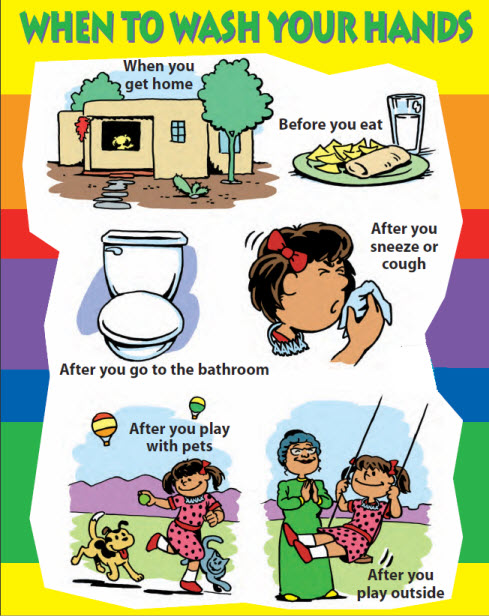
Prevention of Sepsis.
There are a few steps that can be taken to prevent a sepsis infection.
- Make sure that your vaccinations are updated.
- Avoid using contaminated needles.
- Follow proper hand washing procedures.
- Thoroughly clean any open wounds and keep them free of infections.
- Good personal hygiene practices.
- Get your annual check-ups done regularly.
- Treat your infections thoroughly.
- Use proper protection or, if possible, stay away from sepsis infected sources.
- Report any symptoms to your doctor.
- Build up your immune system.
- You can also schedule a blood test for sepsis screening.
- Be informed about Sepsis.
- Use your full dose of antibiotics, when it's prescribe for your infection.
Stay Healthy, Be Happy!

